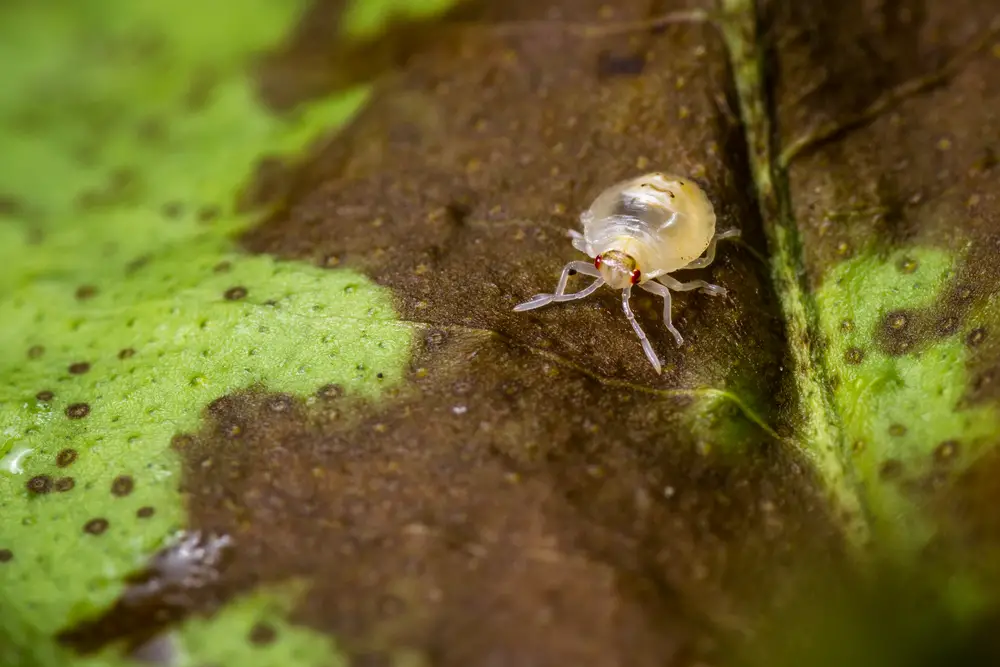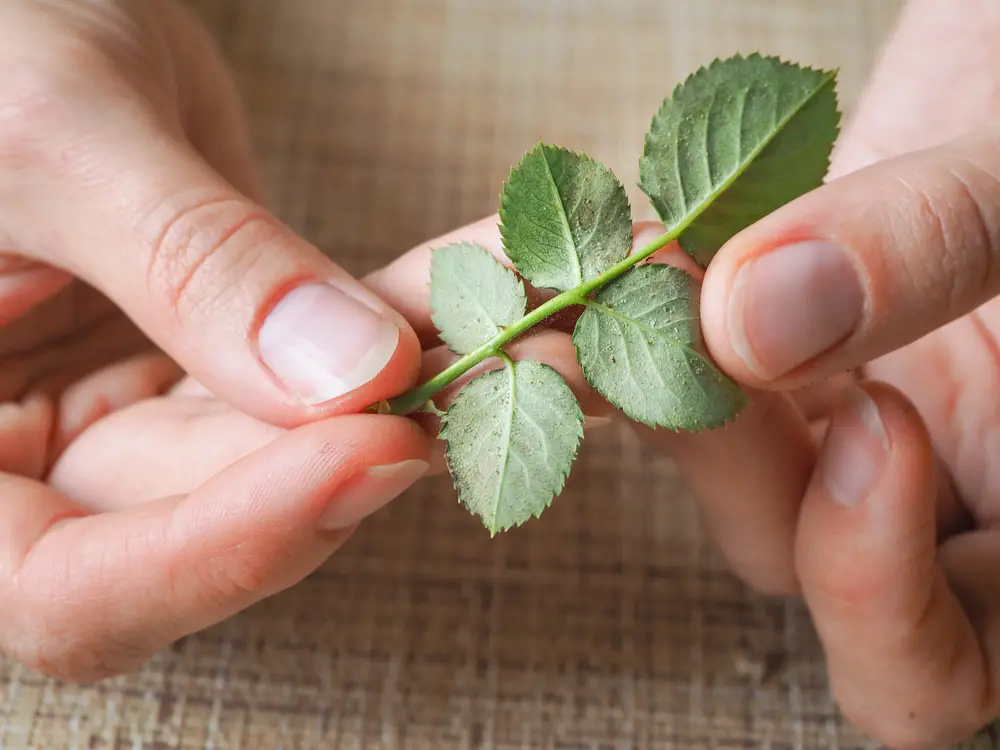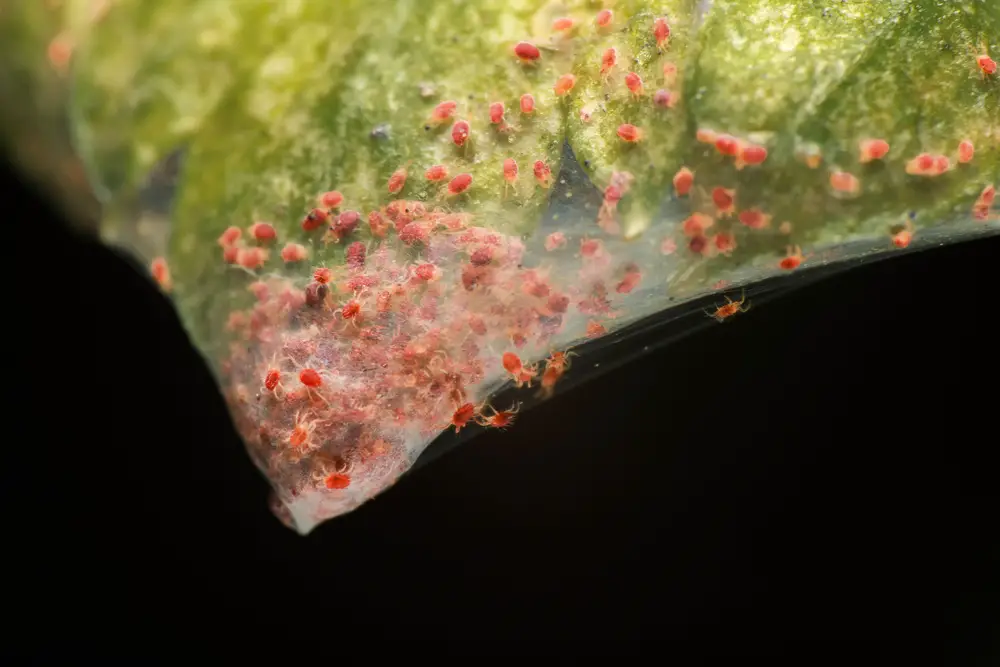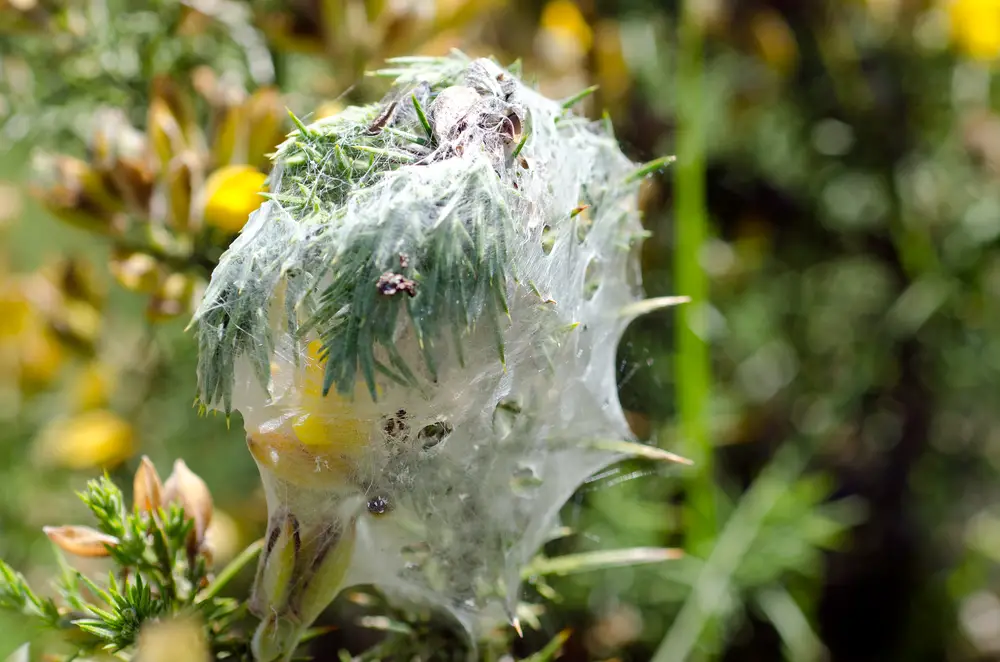Venturing into the world of gardening can often feel like stepping into an ongoing detective story. Each plant, with its unique set of needs, hints at a delicate balance between light, water, and air.
And just as you think you’ve got everything figured out, in come the tiny antagonists – like spider mites, throwing a wrench into your perfectly crafted green paradise.
But understanding these minuscule pests can be the key to keeping your garden thriving.
One burning question: What about humidity? Do spider mites bask in moist environments, or do they have a penchant for the drier side of life?
Quick Answer:
Spider mites thrive in low-humidity environments. Dry conditions accelerate their reproduction and reduce the effectiveness of many natural predators. High humidity levels can suppress their populations and make conditions more favorable for fungal pathogens that attack spider mites.
Understanding Spider Mites
Spider mites are tiny arachnids that belong to the family Tetranychidae. They are named after their spider-like appearance and their ability to spin webs.
These pests have eight legs and are usually less than 1mm in size. They can be identified by their dark spots and the colors of their bodies, which can range from green to red.
There are many types of spider mites, but the two most common species are the two-spotted spider mite and the red spider mite. The two-spotted spider mite is usually green or yellow, while the red spider mite is red or orange.
Both species can cause significant damage to plants, as they feed on the sap of leaves and stems.
Spider mites thrive in warm and dry environments, and humidity can play a significant role in their development.
Contrary to popular belief, spider mites do not like high humidity levels. In fact, high humidity can lead to fungal growth, which can be detrimental to spider mites.
However, low humidity levels can also be harmful to spider mites. When the air is too dry, spider mites can become dehydrated and die. Therefore, it is essential to maintain a balance of humidity levels to prevent spider mites from infesting plants.
Spider Mites and Humidity

Spider mites are tiny arachnids that are known to infest plants and cause damage to them. They are known to thrive in hot, dry conditions and can cause a lot of damage to plants if not controlled.
Many people wonder whether spider mites like humidity and, if so, how much humidity is optimal for them.
In general, spider mites prefer low-humidity environments. They thrive in dry weather and hot, dry conditions. Higher humidity levels can make it more difficult for spider mites to survive, as they require a dry environment to thrive.
However, this does not mean that spider mites cannot survive in higher-humidity environments.
In fact, some species of spider mites are known to prefer higher humidity levels. For example, the two-spotted spider mite is known to thrive in environments with humidity levels between 60-90%.
This species of spider mite is commonly found in greenhouses and other indoor growing environments.
Spider Mites Life Cycle
Spider mites are small arachnids that belong to the Tetranychidae family. They are known to thrive in warm and dry environments and can cause significant damage to plants.
The life cycle of spider mites begins with the eggs, which are laid by female mites on the leaves of plants.
These eggs are spherical and translucent, measuring around 0.14 mm in diameter. The eggs hatch into larvae, which are the first stage of spider mites’ development.
The larvae feed on the plant’s sap and molt into protonymphs, which are the second stage of development. The protonymphs then molt into deutonymphs, which are the third stage of development.
During these stages, spider mites continue to feed on the plant’s sap and grow in size.
The final stage of development is the adult stage, where spider mites become sexually mature and can reproduce.
Female spider mites can lay up to 20 eggs per day, and their reproduction rate is influenced by temperature and humidity. High humidity levels can reduce the reproduction rate of spider mites, but it does not necessarily kill them.
During unfavorable conditions, such as cold temperatures, spider mites enter diapause, which is a state of dormancy. In this state, spider mites stop feeding and reproducing until favorable conditions return.
Spider Mites Habitat
Spider mites are tiny pests that can be found in a variety of habitats, both indoors and outdoors. They are known to thrive in warm and dry environments, making them particularly common in arid climates and during periods of drought.
However, they can also survive in more humid environments as long as the humidity is not too high.
Indoor spider mites tend to be most common in areas with low humidity, such as heated homes and offices. They are often found in dusty areas, such as on houseplants, in carpets, and on upholstered furniture.
Dust mites, which are another common indoor pest, can also provide a food source for spider mites.
Outdoor spider mites can be found in a variety of habitats, including gardens, fields, and forests.
They are particularly common on plants that are stressed or weakened, as well as on plants that are in direct sunlight and exposed to high temperatures. In general, spider mites prefer plants that are dry and have a lot of dust or debris on their leaves.
Spider Mites and Plants

Spider mites are tiny pests that are known to infest a wide range of plants, including houseplants, flowers, vegetables, fruits, and ornamental plants. These pests feed on the sap of plants, causing damage to the foliage, stems, and fruits.
While spider mites can thrive in a variety of conditions, they tend to prefer warm and dry environments.
In fact, high humidity levels can actually inhibit their reproduction and growth. However, this does not mean that plants should be kept in overly dry conditions, as this can also be harmful to their health.
Some plants are particularly susceptible to spider mite infestations, including roses, cucumbers, tomatoes, oaks, spruces, and pines. These plants should be monitored regularly for signs of infestation, such as yellow or brown spots on the leaves, fine webbing on the undersides of leaves, or stunted growth.
Preventing spider mite infestations is key to keeping plants healthy. This can be done by regularly inspecting plants for signs of infestation, maintaining appropriate humidity levels, and avoiding over-fertilizing or over-watering plants.
If an infestation does occur, there are a variety of treatments available, including insecticidal sprays, predatory mites, and neem oil.
Overall, while spider mites can be a nuisance for plant owners, with proper care and attention, infestations can be prevented and controlled.
Identifying Spider Mite Damage
Spider mites are tiny pests that can cause significant damage to plants. They are known to thrive in dry, warm conditions, but do spider mites like humidity?
The answer is no. In fact, high humidity can actually help control spider mite populations. However, spider mites can still cause damage even in humid conditions.
One of the most common signs of spider mite damage is the appearance of yellow spots on the leaves of plants. These spots are caused by the mites feeding on the chlorophyll in the leaves.
As the mites continue to feed, the yellow spots can turn into brown or black spots, and the leaves may eventually die.
Another way to identify spider mite damage is to look for webbing on the plant. Spider mites produce fine, silk-like webbing that can cover the leaves and stems of a plant. This webbing can make the plant look unsightly and can also interfere with photosynthesis.
If a plant is infected with spider mites, it may also start to look weak and sickly. The leaves may become wilted or distorted, and the plant may stop growing altogether. In severe cases, spider mite damage can even kill a plant.
Preventing and Controlling Spider Mites

Spider mites are a common pest problem in gardens and indoor plants. They thrive in warm and dry conditions, but do spider mites like humidity?
The answer is no. High humidity can actually help prevent spider mites from infesting plants. However, low humidity can make plants more susceptible to spider mites.
Prevention is key when it comes to controlling spider mites. Here are some tips for preventing and controlling spider mites:
- Water plants regularly: Spider mites prefer dry conditions, so keeping plants well-watered can help prevent infestations.
- Increase humidity: As mentioned earlier, spider mites do not like high humidity. Using a humidifier or placing a tray of water near plants can help increase humidity and prevent spider mites.
- Use insecticidal soap: Insecticidal soap is a safe and effective way to control spider mites. It works by suffocating the mites and their eggs. Be sure to follow the instructions on the label carefully.
- Use neem oil: Neem oil is another natural remedy for spider mites. It works by disrupting the mites’ feeding and reproductive cycles. Again, be sure to follow the instructions on the label carefully.
- Use predatory mites: Predatory mites are a biological control method for spider mites. They feed on spider mites and their eggs, helping to control their population. However, they can be expensive and may not be practical for all situations.
- Use horticultural oil: Horticultural oil is a type of oil that suffocates spider mites and their eggs. It can be effective in controlling spider mites, but be sure to follow the instructions on the label carefully.
Spider Mites and Other Pests
Spider mites are one of the most common pests that gardeners encounter. These tiny pests are not actually insects but rather arachnids, which means they have eight legs instead of six. They are very small, often less than 1/20 of an inch in size, and can be difficult to spot with the naked eye.
Spider mites are known to thrive in hot and dry conditions. However, they can also survive in humid environments, which makes them a year-round problem for gardeners.
In fact, high humidity can actually promote the growth of spider mites, as it provides them with the moisture they need to survive.
Other pests that gardeners may encounter include thrips, aphids, and ticks. These pests can cause damage to plants by feeding on the leaves and stems. Some of these pests, such as ticks, can also carry diseases that can be harmful to humans and pets.
To prevent these pests from infesting your garden, it is important to practice good garden hygiene. This includes removing dead plant material, keeping the garden clean and free of debris, and regularly inspecting plants for signs of infestation.
Additionally, using natural predators such as ladybugs and lacewings can help to control pest populations.
Spider Mites and Humans
Spider mites are tiny arachnids that feed on plants. They are not known to bite humans, but they can cause some irritation and allergic reactions in people who come into contact with them.
Spider mites do not like high humidity, and they thrive in dry environments.
When spider mites infest a plant, they produce silk webbing that can cover the leaves and stems. This webbing can be irritating to humans, causing itching and discomfort. If someone is allergic to spider mites, they may experience more severe symptoms, such as hives or difficulty breathing.
While spider mites are not a direct threat to human health, they can be a nuisance. If you suspect that you have been exposed to spider mites, it is important to wash your skin and clothes thoroughly to remove any possible allergens.


